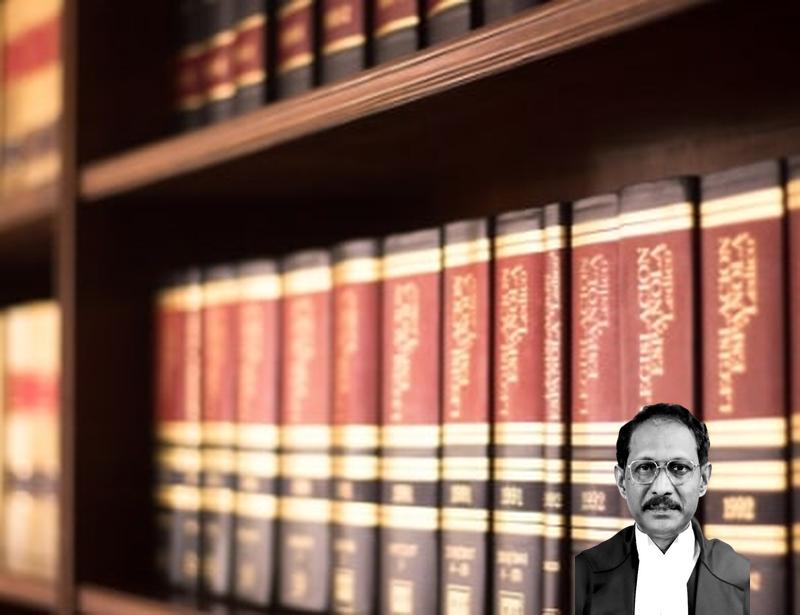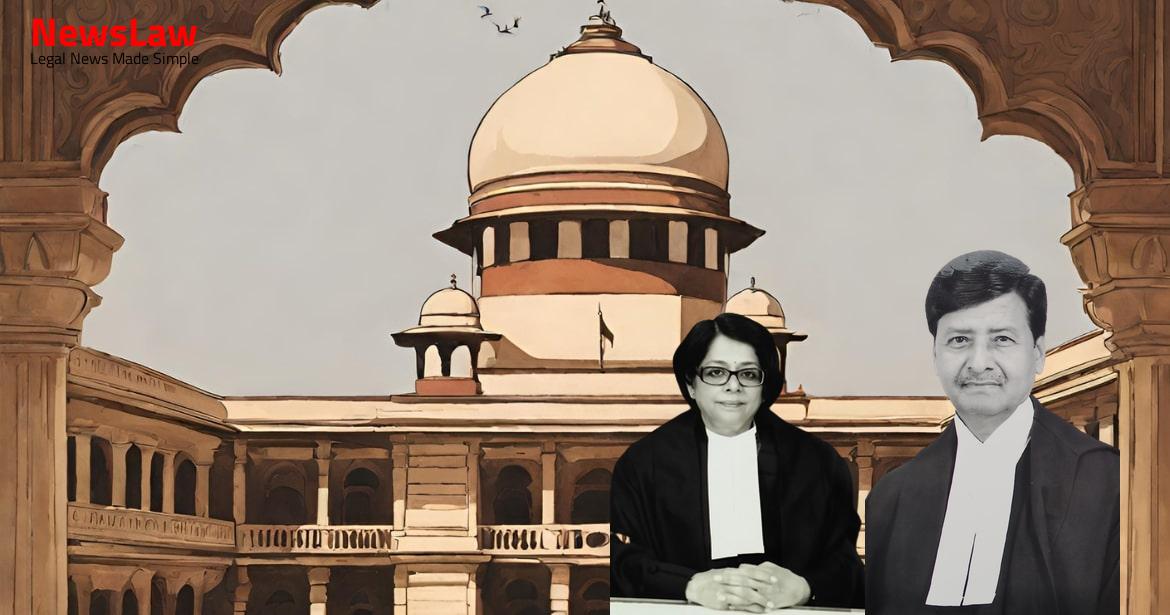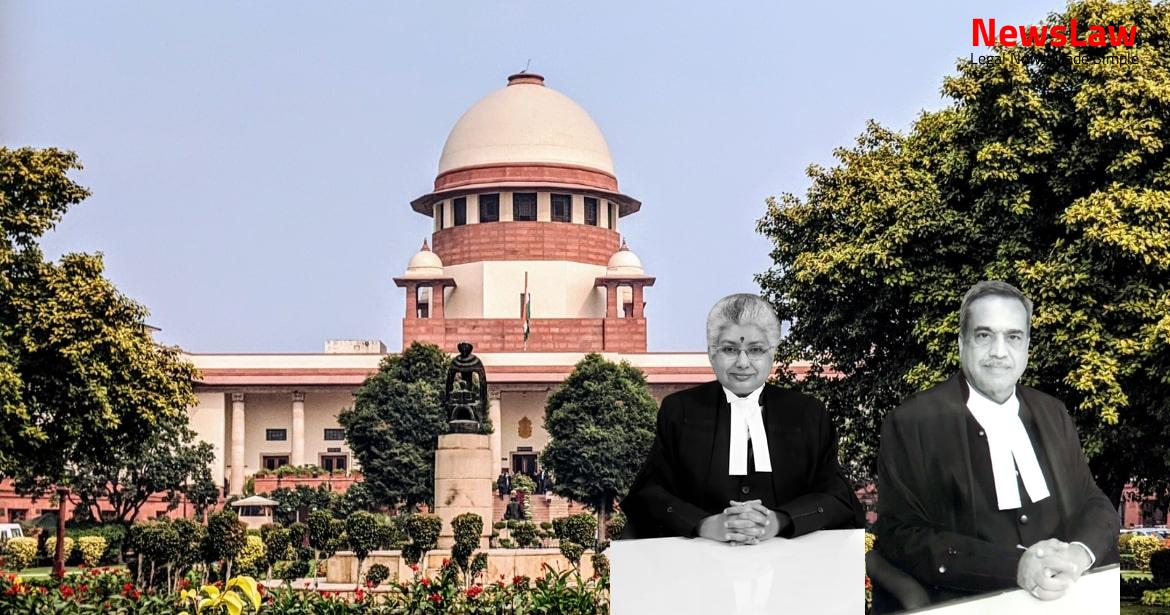They were convicted and sentenced as above in Sessions Case No.121/99/2000 and Sessions Trial No.17/2000 and their conviction and sentences were confirmed as per the impugned judgment and order dated 30.07.2014 passed by the High Court of Punjab and Haryana in C.R.A. Later, pursuant to the recording of statements from PW-10 Mukesh and PW-8 Azad, offences under Sections 302 and 201 read with Section 34, IPC were added and the appellants herein were arraigned as accused. Secondly: That on the said date at night in the area of village Nahri you both in furtherance of your common intention did commit murder by intentionally causing the death of Devinder s/o Sukhbir and thereby you both committed an offence punishable under Section 302 read with Section 34 IPC and within the cognizance of this Court.
A scanning of the impugned judgment and order would reveal that the conviction of the appellants based on circumstantial evidence, consisting of evidence of last seen, extra judicial confession, recovery of weapon of offence and motive, was confirmed by the High Court. As a matter of fact, there is no challenge against the identification of the body and also against the concurrent finding that the death of Devinder @ Kala is homicide and it is culpable homicide amounting to murder. As noticed hereinbefore the appellants were found guilty based on the circumstantial evidence and the first link in the chain of circumstantial evidence is the ‘last seen’ evidence. Satish, this Court held thus: “The last seen theory comes into play where the time gap between the point of time when the accused and the deceased were seen last alive and then the deceased is found dead is so small that possibility of any person other than the accused being a part of the crime becomes impossible. We do not think that a detailed discussion or analysis on this issue is essential to hold that ‘last seen’ theory was totally inapplicable in the case on hand in view of the following clear finding of the trial Court, which was not interfered with by the High Court. When the categoric finding of the courts below, on appreciation of the oral testimonies of the prosecution witnesses is that none of the witnesses had spoken of having lastly seen the deceased in the company of the accused alive and together, there cannot be any reason to hold that ‘last seen evidence’ is available in the instant case as a link in the chain of circumstantial evidence against the appellants.
To wit, without marshalling and appreciating the evidence to consider whether the circumstance of ‘last seen’ is available as a link in the chain of circumstantial evidence, evidently, the High Court based on the oral testimonies of PW-10 Mukesh, PW-8 Azad and PW-7 Daya Nand accepted the prosecution story that the deceased Devinder and Poonam met at the fodder room near Katvawala passage at about 08.30 pm on 25.06.1999, they were found in a compromising position by the appellant-convicts and thereafter, the appellant- convicts snatched the chunni from Poonam and strangulated Devinder and caused his death, they put the dead body in a gunny bag and placed it in the Ambassador car parked near fodder room and on being taken the corpse near to Delhi canal it was thrown into the said canal.
State of UP this Court held thus:- “Though establishing common intention is a difficult task for the prosecution, yet, however difficult it may be, the prosecution has to establish by evidence, whether direct or circumstantial, that there was a plan or meeting of mind of all the assailants to commit the offence, be it pre-arranged or on the spur of the moment but it must necessarily be before the commission of the crime.” A bare perusal of Section 364, IPC would reveal that to establish an offence under this Section it must be proved that the person charged with the offence had the intention at the time of kidnapping or abduction to murder or to dispose of as to be put in danger of being murdered. The prosecution is supposed to establish its case as it put forth by it and if the case is disbelieved on any aspect by the Court then the Court cannot make out a new case on its own for the prosecution.” We agree with the aforesaid proposition.
Hence, the accused are acquitted for the offence under Section 364/34, IPC.” (Emphasis added)
It is a fact discernible from the judgment of the trial Court as also that of the High Court whereunder the trial Court’s judgment was confirmed that no consideration was spared about this aspect. In short, the prosecution had not cared to establish the charge framed against the appellants under Section 364/34, IPC and despite that it went on to put forth another case, as above. Before appreciating the oral testimonies of PW-10, PW-8 and PW-7 and the manner of their appreciation by the courts below we think it apposite to consider the question whether the ‘last seen theory’, in its application, could brook presumption as to the presence of the deceased along with the accused just prior to the occurrence, as drawn by the trial Court, in the absence of positive ocular evidence of prosecution witnesses of having seen the deceased in the company of the accused together and alive at a time proximate to the occurrence. Furthermore, it was held that the last seen theory would come into play where the time gap between the point of time when the accused and the deceased were last seen alive and the deceased was found dead is so small that a possibility of any person other than the accused being the author of the crime would become impossible. We may hasten to add that the High Court had not discussed the correctness or otherwise of the said presumption drawn by the trial Court and even without such an exercise, relied on the other circumstances to confirm the conviction. He also deposed that at about 08.30 pm when he was returning home from field in his tractor, he saw both the appellants viz., Joginder Singh and Krishan Kumar going towards the fodder room.
This cannot be taken as a mere omission as it militates against the core of the prosecution case that deceased Devinder told PW-10 that he was in love with Poonam and that she had promised to meet him in the evening of 25.06.1999 at a fodder room near Katvawala passage and later, upon such eventuality the appellants caused the murder of Devinder by strangulation at the fodder room near Katvawala passage. However, it is inadmissible only when it proposes to establish the truth of the statement but not the factum of the statement by other persons. There is a fine distinction between proving the factum of a statement by other persons and proving the truth of such statement. The fact that it was made quite apart from its truth, is frequently relevant in considering the mental state and conduct thereafter of the witness or some other persons in whose presence these statements are made.” It can be seen that PW-10 had only spoken about the factum of deceased Devinder’s divulgation that he is in love with Poonam and also about her promise to meet him in the evening of 25.06.1999 at the fodder room near Katvawala passage. Thus, in the light of the aforesaid position, applying Section 60 of the Evidence Act, even if it is taken that evidence of PW 10 is admissible to the extent that deceased Devinder revealed about his love with Poonam and her promise to meet Devinder in the evening of 25.06.1999 to PW-10 the evidence of PW-10 could not be taken as admissible as relates the truth of the said statement. Thus, viewing from all angle, it can be seen that the evidence of PW-10 is not free from suspicion and at any rate, it cannot be taken as a positive evidence sufficient to justify the application of the theory of ‘last seen’ or to presume the presence of Devinder in the company of the appellants in the evening of 25.06.1999, describing it as ‘last seen’ evidence. His version before the Court is that he had seen an old model white Ambassador car parked near the plot of Zile Singh and Balwan Singh at about 08.30 pm on 25.06.1999 and further that he had seen, at that time, the appellants taking out a gunny bag from their Kotha and putting it in the said Ambassador car and took it towards Katlapur village. If they were actually returning from their field though not along with the other, and reached near the place in question almost at the same time viz., about 08.30 pm on 25.06.1999 this kind of discrepancies could not have been there in their versions. PD would reveal that he conducted the postmortem on the body of Devinder on 29.06.1999 at 02.30 pm. The evidence on record would reveal that inquest was conducted on 28.06.1999 at 10.30 am. PW-10 would depose in that regard that it would be incorrect to suggest that deceased was his cousin and further that it would be incorrect to suggest that his great grandfather and great grandfather of deceased Devinder was Jug Lal. The contradictions brought out from PW-8 and PW-10 by confronting with their previous statements, not inspire confidence.” In the contextual situation, one may really feel that the prosecution had withheld their best evidence, for reasons best known to them.
If the prosecution got no good reason for not producing the best evidence, in the sense, the best witness who could help the prosecution to establish their case, then adverse inference could have been taken only against the prosecution and certainly that cannot be a reason to hold that the defence could have distorted/ disproved the motive that was projected by the prosecution by examining that witness.
this Court held thus: “It is a cardinal rule in the law of evidence that the best available evidence should be brought before the court. Initially, PW-9 suggested an incident that occurred on 29.05.1999 as motive. But the appellants were not named as assailants in connection with that incident.
Though, as noted earlier, this was the motive as per the prosecution projected through PW 7, a scanning of the entire oral evidence of all witnesses would reveal that none of them had actually spoken to the effect that he had seen the deceased and sister of the appellants Poonam either inside the fodder room near Katvawala passage at the relevant point of time or even at any time proximate to the occurrence near the aforesaid place. Virtually, no evidence was adduced by the prosecution in that regard and in fact, on that aspect also prosecution relies only on the extra judicial confession made by the appellants before PW-7. State of Haryana this Court held that after subjecting the evidence of the witness to a rigorous test on the touchstone of credibility the extra judicial confession could be accepted and it could be the basis of a conviction if it passes the touchstone of credibility. Where there is material to show animosity, court has to proceed cautiously and find out whether confession just like any other evidence depends on veracity of witness to whom it is made. If substance itself is sufficient to prove culpability and there is no ambiguity about import of the statement made by the accused, evidence can be acted upon even though substance and not actual words have been stated. Going by the deposition of PW- 7 Daya Nand, the appellants herein, (named by him as Joginder and Krishan), came to him while he was sitting in his Baithak and told him about the factum of commission of murder of Devinder s/o Sukhbir Singh, manner of murder and causing disappearance of evidence etc.
The accused also told me that on 25-6-99 they went to fodder room of Zile Singh, where they found Davinder And Poonam in a compromise position. The dead body was recovered on 28.06.1999 from Delhi Canal and on 03.07.1999 statements of PW-8 Azad and Azad’s son, PW-10 Mukesh were recorded by police.
I cannot tell the exact date of cremation of Davinder but he was cremated in my presence. I also did not see the police on the next date of cremation.
Case Title: KRISHAN KUMAR Vs. THE STATE OF HARYANA (2023 INSC 679)
Case Number: Crl.A. No.-001076-001077 / 2015



